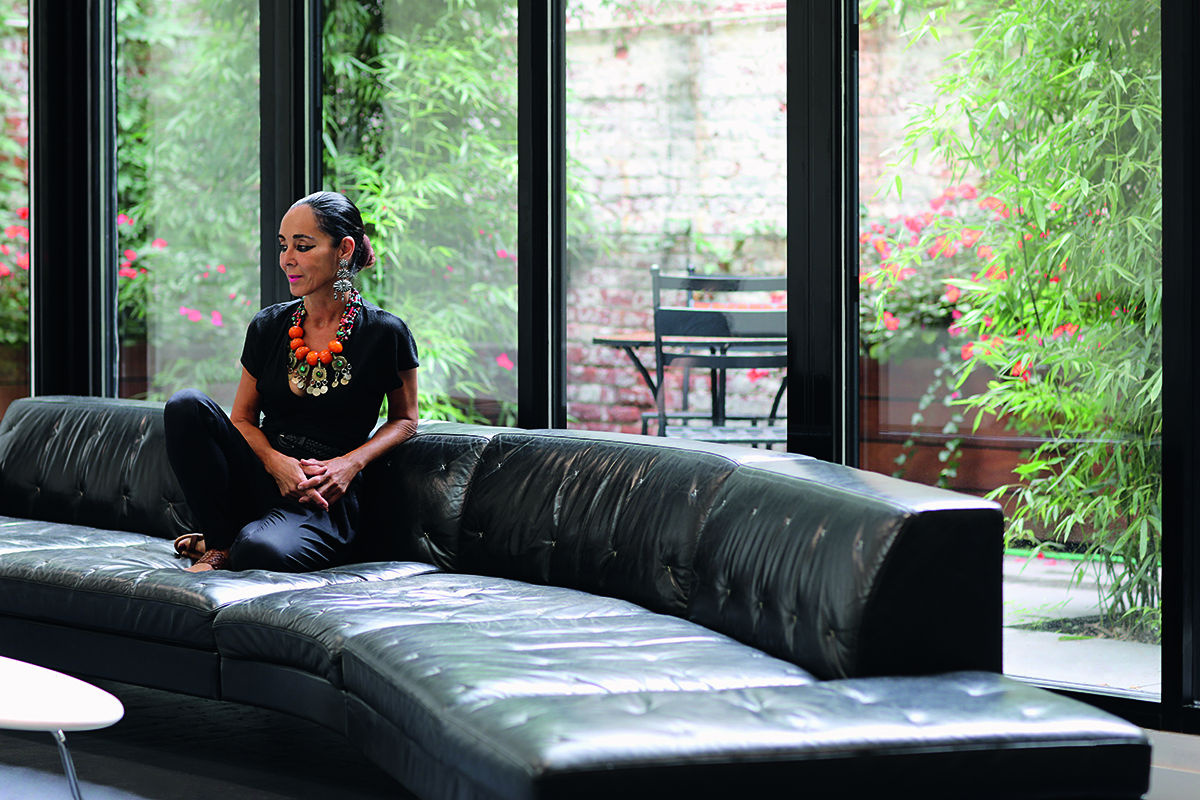
Shirin Neshat at home in New York City
Shirin Neshat’s devastatingly striking art combines dream, reality and an undercurrent of anger and sadness. As a major retrospective of her work is held in Los Angeles, Millie Walton meets the artist at the launch of her collaboration with celebrated Italian winemaker Ornellaia, famous for its artist labels
Portrait photography of Shirin Neshat at home in New York by Maryam Eisler
Iranian-born filmmaker and artist Shirin Neshat sits demurely drinking a cup of coffee in the palatial breakfast room at Baglioni Hotel Luna in Venice. It’s the morning after the Sotheby’s auction at the Peggy Guggenheim Collection which saw the sale of limited-edition bottles of 2016 Ornellaia wine with Neshat’s label artwork. A total of $312,000 was raised, with all profits going to the Mind’s Eye programme, which was conceived by the Solomon R. Guggenheim Foundation to help blind people experience art through the use of other senses.
Follow LUX on Instagram: luxthemagazine
The success of Neshat’s collaboration, following that of William Kentridge’s in 2018, was well deserving of late-night celebrations, but the artist is composed and alert, her jet-black hair scraped tightly back from her face, and her dark eyes lined with black kohl. It’s a look that would seem somewhat severe or even theatrical on most, but Neshat wears it with authenticity, grace and a sense of homeliness. She pulls up another chair close to hers so that I can hear what she’s saying over the clamour of the breakfast buffet and tells me that she’s been ordering coffee to her room each morning and is worried that Ornellaia will have to foot the bill. Given the sum raised last night along with Neshat’s status as the world’s most important and widely recognised contemporary Iranian artist, it’s hard not to laugh, but she speaks softly and sincerely, taking time to consider each of her answers and apologising when yet another admirer interrupts for an autograph. She has a lot of fans it seems, yet her politically engaged work continues to generate debate. She admits, “Some people dislike what I do. There are a lot of people who hate my work in Iran, but still it is discussed, so I think I’m relevant.”
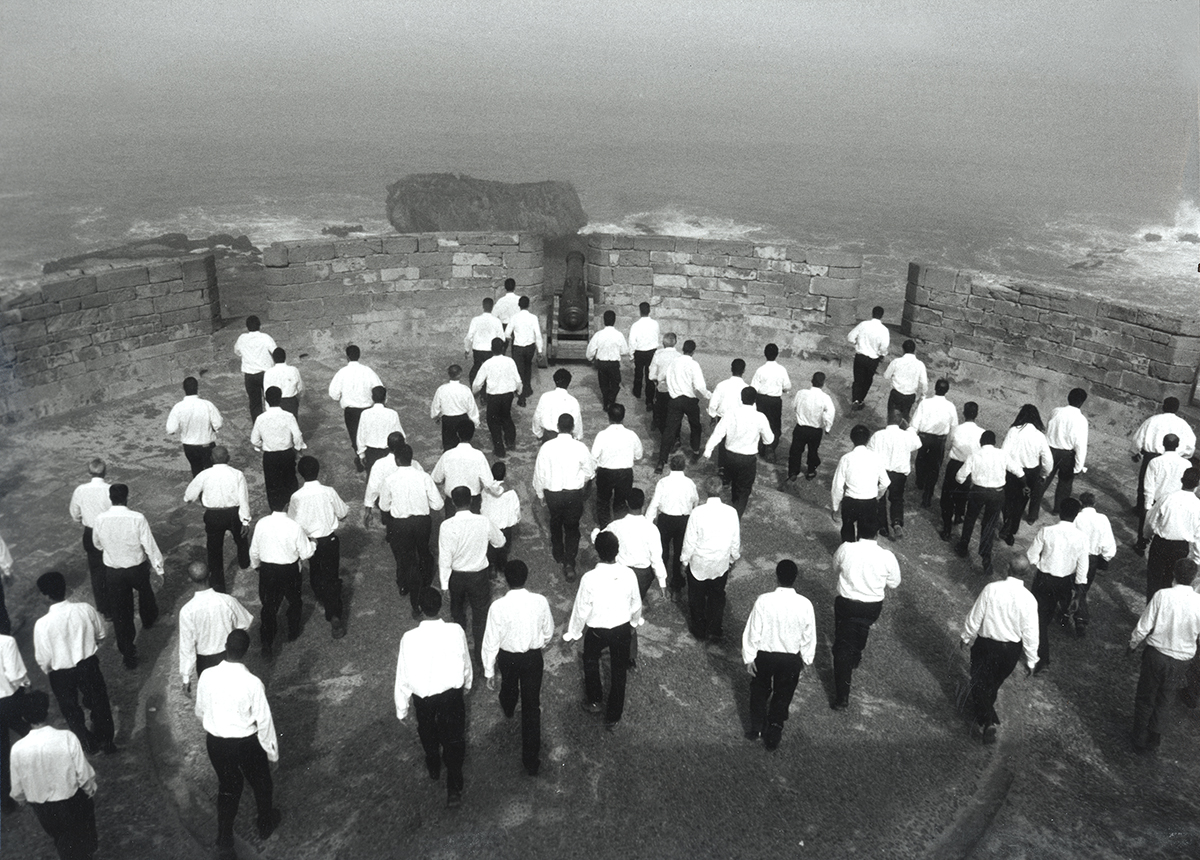
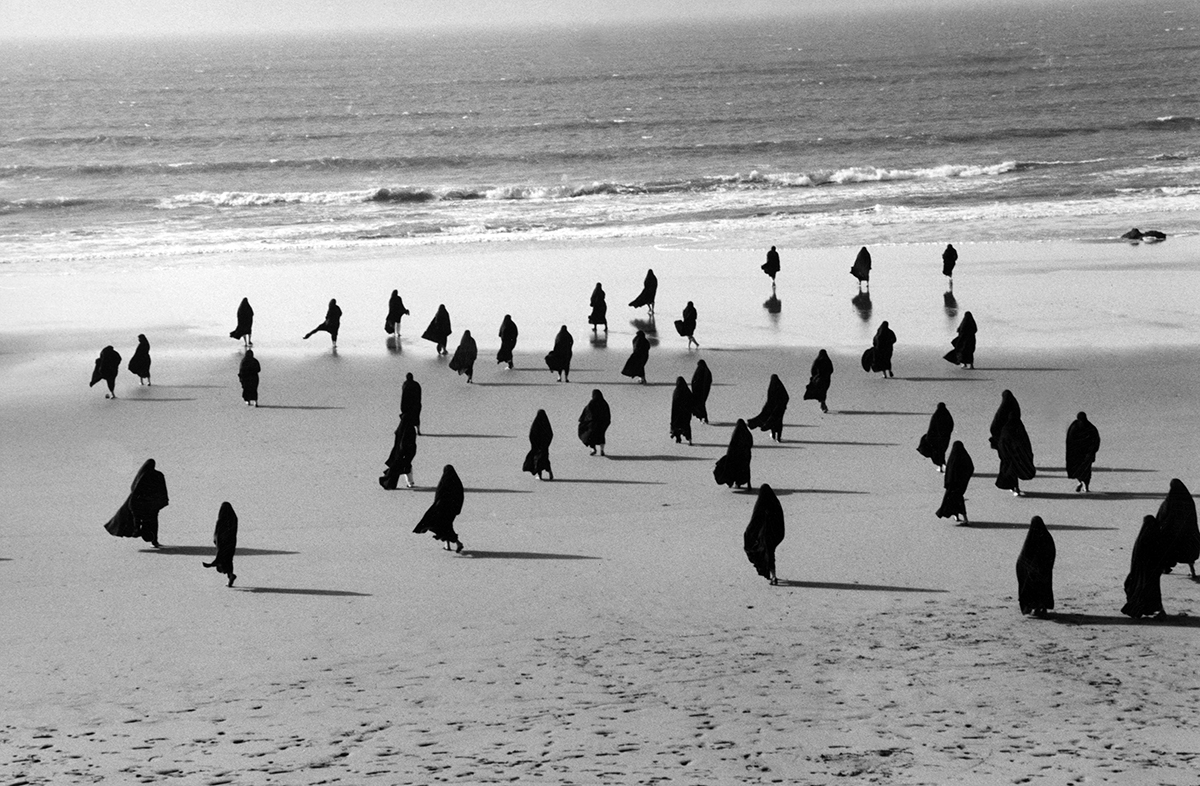
Here and above: stills from Neshat’s video Rapture (1999)
Neshat was born in the city of Qazvin, north-west of Tehran, but left for California at the age of 17 to finish her schooling. Her training as an artist began with her undergraduate and masters degrees in fine art at the University of California, Berkeley. However, she abandoned art-making and moved from Los Angeles to New York in the early 1980s. It was a decade later, through photography first and then film, that she found her artistic vision. She has now been working as an artist for more than 30 years and has won numerous international awards, including the Golden Lion at the 1999 edition of the Venice Biennale for her powerful short film Turbluent, which explores gender roles and social restrictions in Iranian culture. The film plays out on two screens: one shows a male performer singing a love song by the 13th-century Persian poet Rumi to a large audience of men, whilst on the other screen, a veiled woman waits in an empty auditorium, her back turned to the camera. When the man’s performance finishes, the woman begins a wordless song of guttural cries, mournful melodies, panting and animalistic screeching. This film was not only significant in establishing Neshat’s career, but also in paving the way for her succeeding works, which all, in one way or another, deal with the restrictions of female experience. Though embedded in narratives of conflict, Neshat’s work offers a sense of hope in which women find freedom through art in all its various guises.
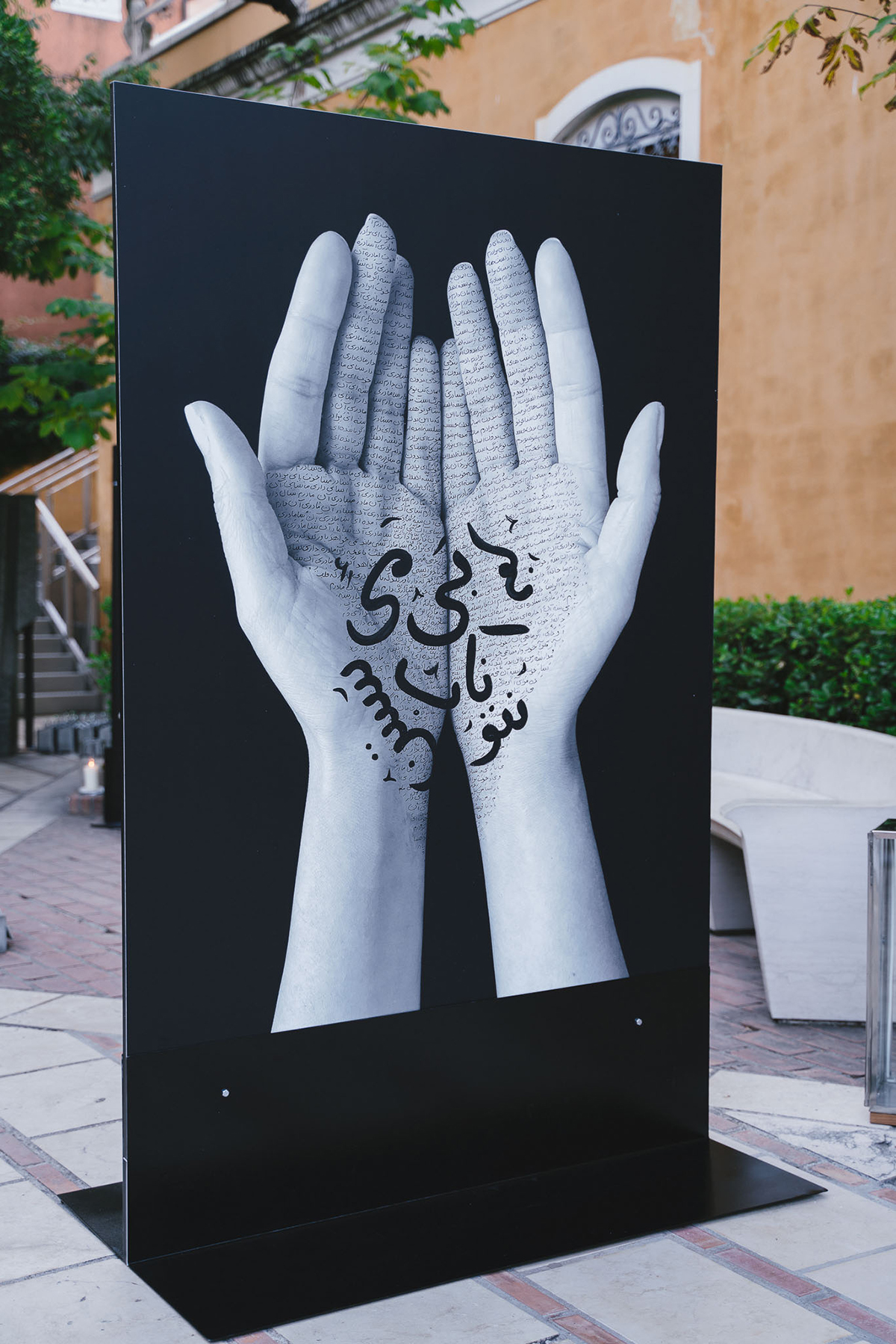
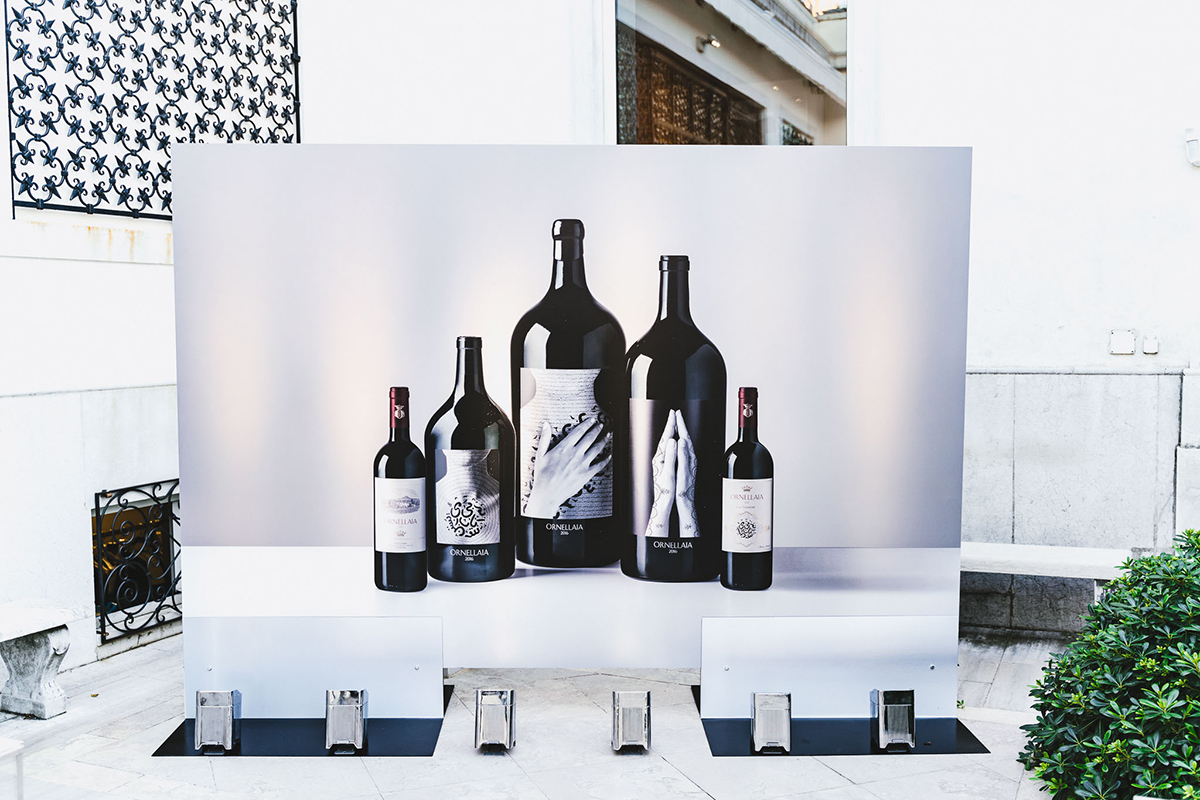
Neshat’s designs for Ornellaia’s ‘La Tensione’ bottle label

Neshat with Ornellaia’s estate director Axel Heinz
Given these preoccupations, the artist’s decision to collaborate with Tuscan winemaker Ornellaia is somewhat baffling. “In our culture, wine is a way not to escape, but to transcend reality and so [drinking wine] is a sacred, spiritual act,” says Neshat. “But in general, I feel like an occasional step out of your own milieu is actually very positive. For one thing, it puts your work in front of a new audience, but also, for me, [commercial work] is an attractive way of financing my projects. I make work that takes me six years and I make zero money so I think that any patronage that finances your practice and gives you the freedom to do your work is great.” Her series of images for Ornellaia, interpreting the theme ‘La Tensione’ which gives this vintage its name, depict white hands inscribed with Persian script, luminous against a black background. The use of hands, along with literature and monochromatic shades are all typical of Neshat’s aesthetic and imbue the work with a haunting, dreamlike quality. “I’m very interested in the subtlety of body postures and how they can reveal emotion, especially coming from the Islamic tradition and how provocative and problematic the body can be,” she says. “There’s a certain universality about hand gestures.” She places one palm against her chest: “This, for example, could be love”.
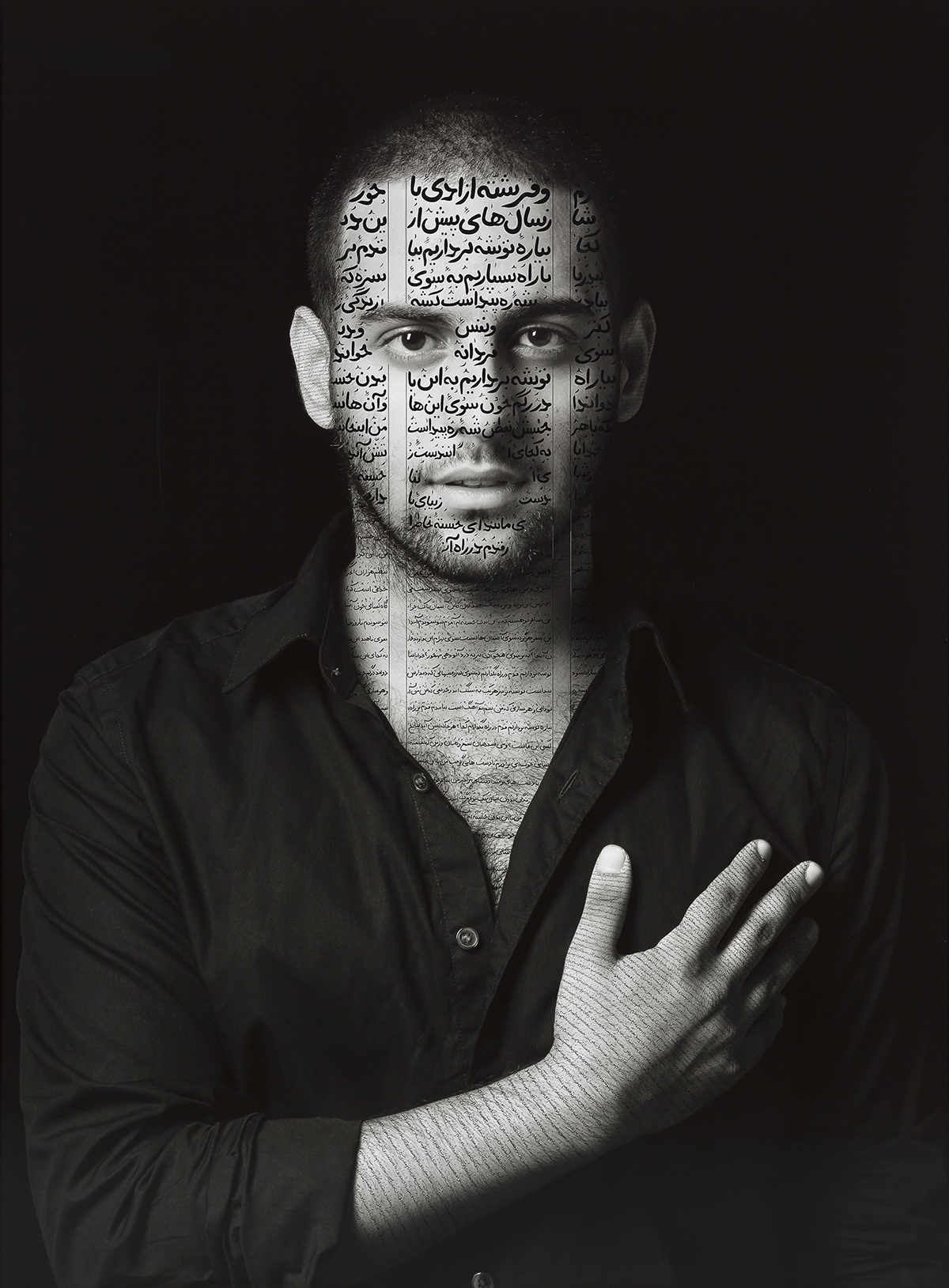
Ibrahim (Patriots) from The Book of Kings series (2012) by Shirin Neshat
The work is reminiscent of Neshat’s first series of black-and-white photographs, entitled Women of Allah (1993–97), which was created following the artist’s return to Iran in 1990, her first visit following the 1979 Islamic Revolution. When Neshat arrived back in Iran, it was in the wake of dramatic cultural changes. Women of Allah not only marked the rebirth of her making art, but also her engagement with the country’s political landscape – an engagement which led to her current state of exile. The series focuses on female martyrdom, showing veiled women holding weapons, their faces, hands and feet again inscribed with Farsi poetry, highlighting the revolutionary Iranians’ dual identities as both Persians and radical Islamists, as well as the tension between devotion and violence.
Read more: Introducing the next generation of filmmakers at Frieze LA
Her practice continues to be preoccupied with contrasts, highlighted by the minimalism of black and white, but also with conflict. “There are plenty of artists whose making of art is an aesthetic exercise, which is important because it has intellectual and artistic values of the highest level,” she explains. “But for artists born to a country like Iran, the relationship to art is personal in a way that it cannot be separated from daily realities. I don’t think we have the emotional capability of distancing ourselves from these issues, and it is an incredibly fulfilling process when you make work that is politically conscious. It also means that you have a relationship with an audience that is larger than the [usual] art audience because people are able to identify with the subject matter.”
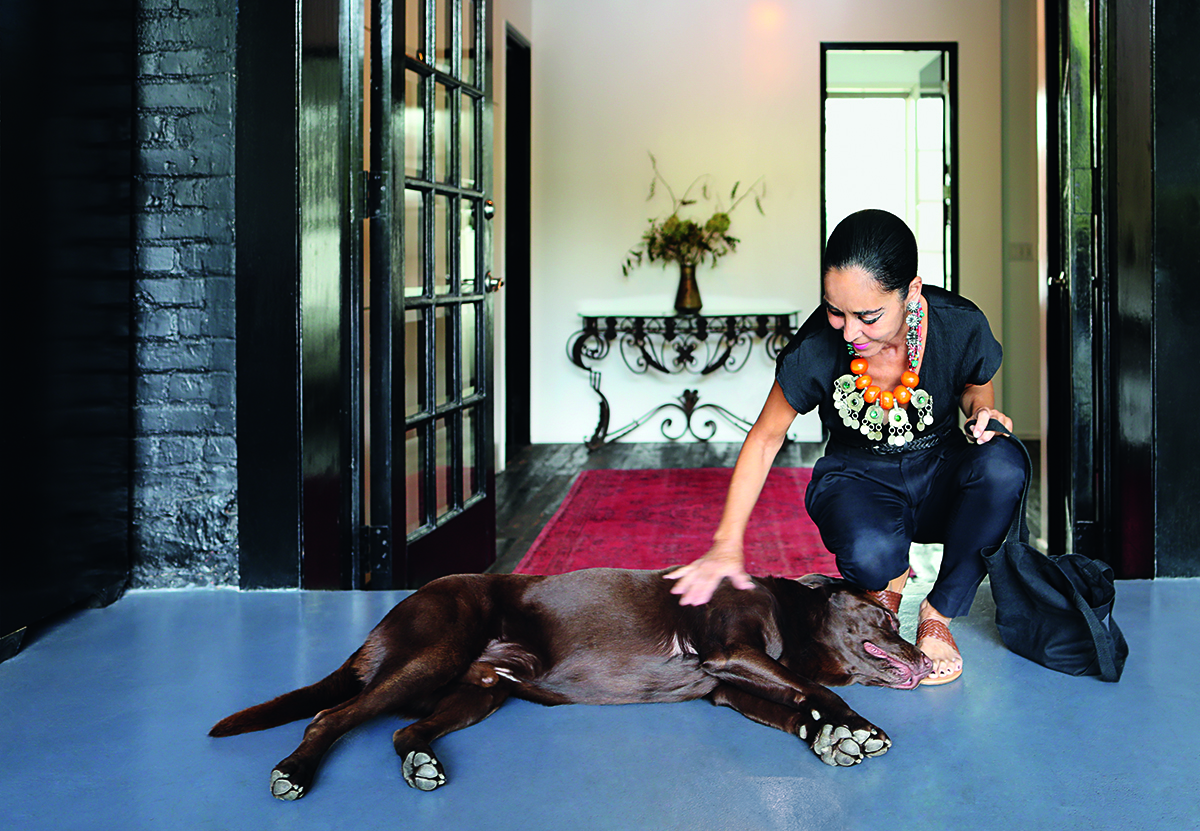
Despite Neshat’s acute political engagement, her work has a sense of timelessness achieved by incorporating literature and music as well as elements of the surreal. “Music is very existential,” she says. “It sort of neutralizes a political reality, but it also contains all these cultural references and has a strong physical impact. Powerful music affects your heart.” This is perhaps most apparent in Turbulent, which was inspired by a young blind woman who Neshat saw singing on the streets of Istanbul. Many of her works have involved collaborations with composers and musicians as well as writers and cinematographers. “It’s an essential part of my work to collaborate, especially with people who know me and my work well,” she says. “I’m doing a lot of work in media that I never studied. It’s been really interesting to surround myself with people who have the expertise.”
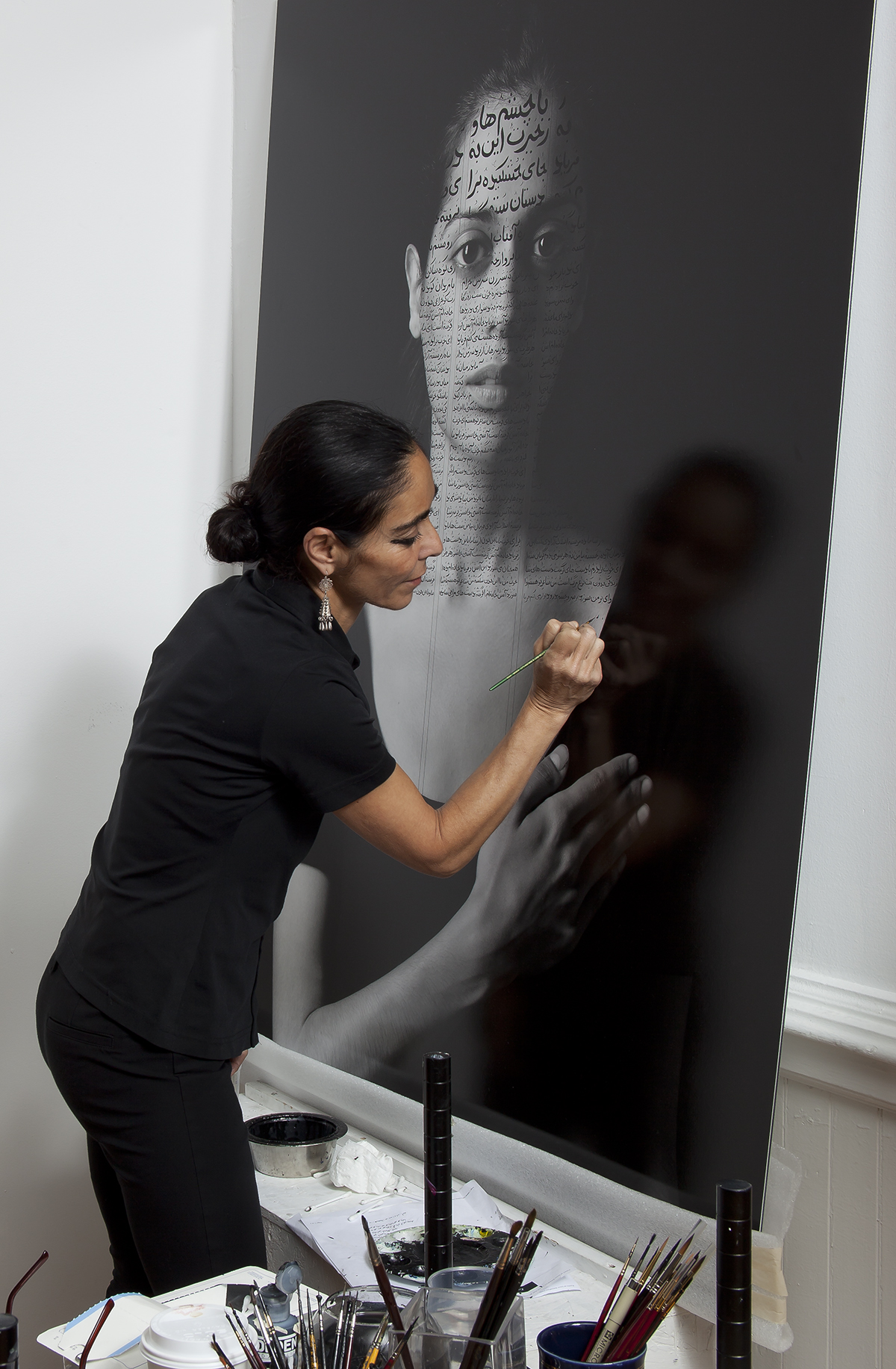
The artist in her studio
Neshat’s artistic ‘family’ is international, but she has gravitated towards other Iranians in New York: “I am sitting on the outside [of Iranian culture], others are by choice and others not; either way, we’re naturally drawn to each other and spend a lot of time helping each other. I do feel integrated in American culture as far as the artwork goes, but I can also see the limitations of not being Western, when your practice is considered to be a little bit outside the box.” Reflecting this duality, Neshat curated ‘A Bridge Between You and Everything’, an exhibition of Iranian women artists held at the High Line Nine Galleries in New York in November 2019.
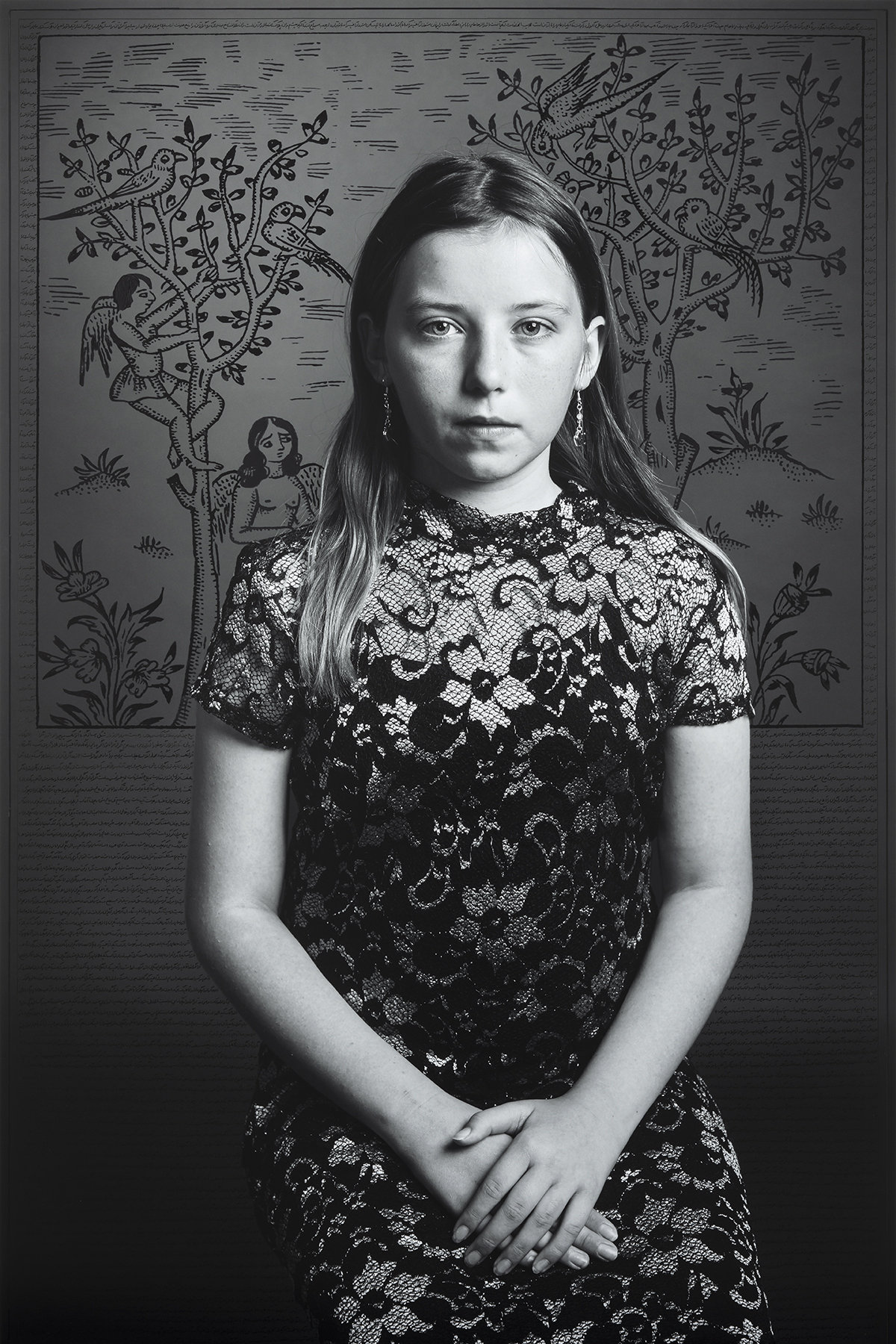
Raven Brewer-Beltz (2019) by Shirin Neshat
Neshat has called New York her home for many years, but her latest project, Land of Dreams, is the first time that she has directly turned her artistic attention towards the US. The project explores her experiences of being an immigrant, focusing on an Iranian woman who collects dreams that portray American people and takes them back to an Iranian colony for analysis. The project is now being shown for the first time as part of Neshat’s major retrospective ‘I Will Greet the Sun Again’ at The Broad in LA, and one wonders at the colony’s interpretations. “It’s kind of an absurd comedy,” she laughs, “but it was also [about] how to tackle a very important political subject – the antagonism between the two cultures as well as the corruption on both sides – through a human surrealism so that it escapes absolute realism. I want it to be timely, but I don’t want it to have no value in a hundred years’ time.” Are these surreal imaginings ever drawn from Neshat’s own dreams? “Yes, I try to write down my dreams every time I wake up. I like how ephemeral dreams are. My work is like the story that comes after.”
‘Shirin Neshat: I Will Greet the Sun Again’ is on show at The Broad, Los Angeles until 16 February 2020: thebroad.org.
Shirin Neshat ‘Land of Dreams’ opens at the Goodman Gallery in London on 20 February and will run until 28 March 2020. For more information visit: goodman-gallery.com
This article was originally published in the Spring 2020 Issue.








